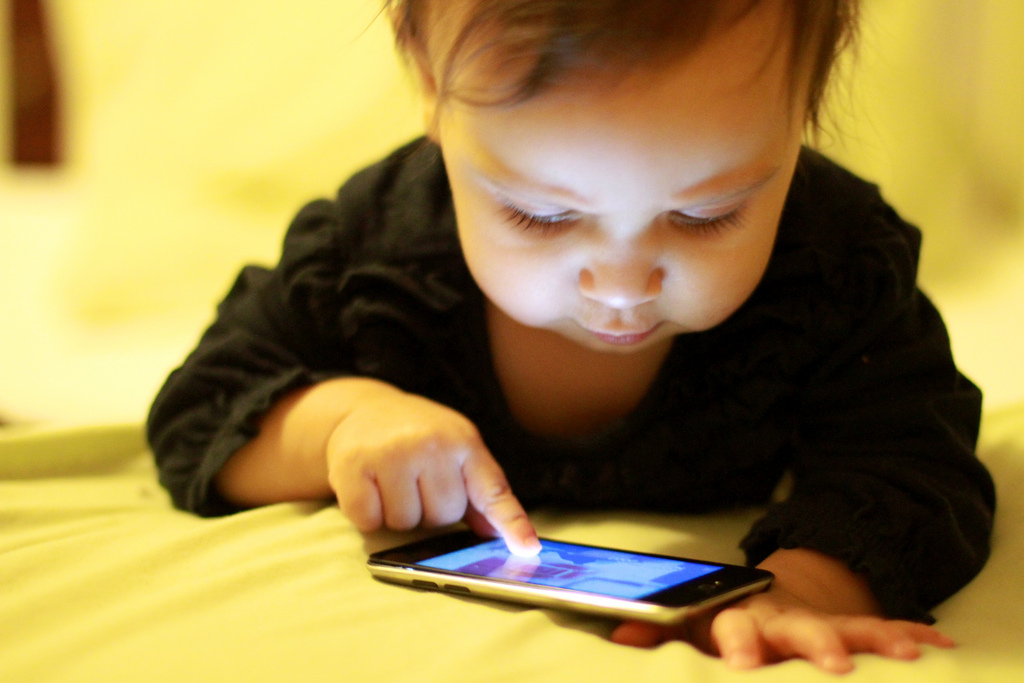The Slippery Slope of Modern Technology
October 4, 2017
Technology has come a long way from the first computers, whose designs required them to take up entire rooms of space just to break WWII codes. Seventy years later, nearly everyone today uses a computer that they can fit their pocket: the smartphone.
These personal, portable computers have become just about essential to everyday life. With them, people work, communicate with each other, read books or articles, or watch videos of news or cute puppies; glowing screens are just about ubiquitous in today’s American society, whether one carts around an iPhone in their pocket, an Android, or a tablet like the iPad in their bag.
So what does this mean for children? Childhood brain development is known for being unique in human growth; only teenagers approach a similar number of neurons being wired and rewired with learning.
Children also have specific periods of learning, such as for language and social cues, when the brain is optimized for absorbing knowledge—but pass it by without sufficient learning, and that part of the brain essentially closes off forever. In studied cases of severe child abuse, people who had these periods of brain development neglected were never able to gain the same level of competence as those who were not neglected.
And children are surprisingly malleable—their brains are often described as sponges when it comes to integrating what they learn. So with the commonality and necessity of technology today, changes in future generations’ brain development is not just a question of how it could happen, but how it will.
“My third child has had way more exposure to technology than my other two have,” said Ms. Smith, English teacher at Pitman High. “…. The iPhone’s been alive longer than he has. And it’s very apparent in his attention span, in his development and his attitude.”
When using technology as entertainment, experiences often stop being about creativity and focus and much more about the instant, constant gratification that a child receives from watching chains of Youtube videos or playing a session of Subway Surfers.
“The hard thing is, as a parent, sometimes you’re so busy, it’s easy to just give your technology to your child and let he or she amuse themselves with it,” added Ms. Smith. “The only thing is, now that I’m talking to elementary school teachers and watching my son develop, his attention span is a lot shorter than my other two kids, and he does not have the ability to amuse himself like my other two do, and he does not have the capability to sit in a classroom and wait for the teacher to give directions and to follow directions because he’s so used to that instant gratification.”
Mr. Searway, History and Psychology teacher at Pitman High, expressed similar opinions about children’s technology use.
“I think younger kids are too dependent or exposed too much to it early,” he said. “So I still believe that even though they’re learning and getting familiar with things, that sometimes it is almost too dominant and maybe they still need the opportunity to read books, play with toys, exercise outside like riding bikes, and being more creative with the things that they have. And sometimes, maybe the technology might hinder that development that’s crucial for brain development and such.”
Of course, integration of technology in learning environments, such as school and educational applications, has so far been mostly positive. But both agree that technology use, despite some of its benefits, ought to be limited when it comes to frequent access.
“I think it is the slippery slope,” Ms. Smith explained. “And I definitely think it should be limited.”
